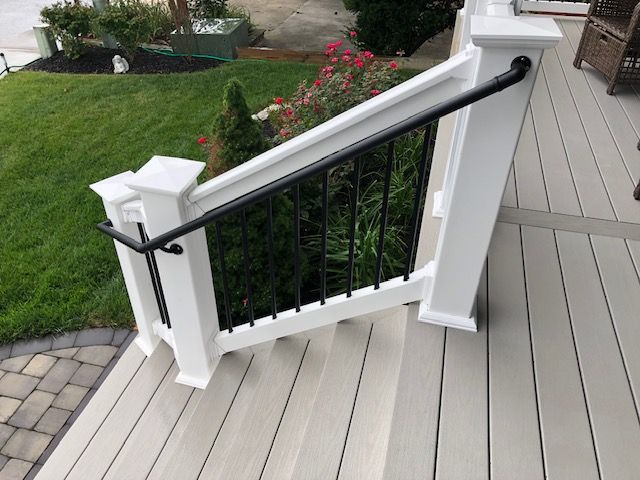AHD Blog
The Purpose of Handrail Returns
Handrails are an essential safety feature in homes and public spaces, offering stability and support for individuals navigating stairs, ramps, and walkways. Every element of handrail design matters, from the length and material of the handrail to the handrail return. Today, we’re going to focus on handrail returns. What is the purpose of handrail returns, and when are they required?
What Are Handrail Returns?
A handrail return is the section of a handrail that curves or turns back to connect the end of a railing to a wall, post, or surface. Handrail returns can vary in design but typically feature a smooth transition that directs the end of the handrail back toward the wall or a support post. Handrail return sections are commonly seen on staircases, ramps, and even along walkways, where safety, stability, and accessibility are priorities.
The Purpose of Handrail Returns
Safety
The primary purpose of handrail returns is safety. An exposed handrail end, particularly on a staircase or ramp, can create a sharp edge or protrusion that poses risks to users. Clothing, bags, or even limbs can accidentally snag on these ends, leading to trips, falls, or injuries. This risk is amplified in high-traffic areas, as people may be less focused on their surroundings, increasing the chance of an accident.
Handrail returns eliminate these hazards by curving the end of the handrail back toward a fixed point, such as a wall or newel post. This smooth transition removes the sharp edge, reducing the likelihood of incidents and injuries.
Support
Another critical function of handrail returns is to offer additional support for individuals with mobility issues. For people with disabilities, seniors, or those recovering from injuries, handrails are more than just a guide — they are essential building features that help people maintain balance and stability when walking up or down stairs, or along a ramp.
A well-designed handrail with proper returns ensures that individuals can continuously grip the railing from one end to another. The smooth curve of a return allows users to maintain their grip as they transition from the end of the handrail to a wall or post, giving them more security and control. This is particularly important for individuals who rely on the handrail for their stability, as it helps prevent falls or stumbles, especially when navigating stairs or inclines.
Code Compliance
Building codes and accessibility regulations often require handrail returns. In the United States, two key codes — the Americans with Disabilities Act (ADA) and the International Residential Code (IRC) — dictate these requirements.
ADA Requirements
The ADA, which outlines accessibility guidelines for public spaces, stipulates that handrails along ramps must extend horizontally above the stair landing for a minimum of 12 inches beyond the top and bottom of ramp runs. These extensions must return to a wall, guard, or landing surface, or otherwise be continuous to the handrail of an adjacent ramp run.
ADA standards are frequently updated. Chapter five (“General Site and Building Elements”) of the standards provides detailed information on ADA handrail requirements.
IRC Requirements
The IRC regulates residential buildings and includes requirements for handrail design. According to the IRC, handrails must return to a wall, newel post, or the walking surface. This ensures that all residential structures are built to a standard that promotes safety for the occupants and visitors.
Local Regulations
Beyond ADA and IRC requirements, many local building regulations also include specific guidelines on handrail returns. Failing to comply with these requirements can result in fines, delays in construction, and, most importantly, a failure to create a safe and accessible environment for all users. While ADA and IRC regulations provide an important starting point for compliance basics, you should treat your local building code as the final authority on handrail requirements.
Visual Appeal
Handrail returns aren’t just an important safety and accessibility feature; they are also a part of good design. Returns help make handrails feel like an intentional and integrated part of a home or building’s overall design, providing a polished, cohesive look that can complement any architectural style.
_____
Looking for an expert who can walk you through purchasing and caring for an aluminum railing? At Aluminum Handrail Direct, we are committed to providing high-quality aluminum handrails that are durable, maintenance-free, affordable, and attractive. Our easy-to-install CHR Handrail Section with Return features a classic design for exterior stair railing use that also works great for interior stair railings. This handrail section is available in various satin, textured, and multi-color finishes, and it features a lifetime limited warranty.
If you have questions about continuous handrails or handrail returns — or are simply searching for a system that fits your needs — call us at 417-409-3179 or 888-518-9890 (toll-free) or visit Aluminum Handrail Direct’s online store. We offer handrails, wall mounts, mounting screws and anchors, touch-up spray paint, and much more. Contact us today!


